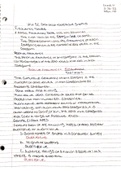Samenvatting
Summary MVDA SPSS Exam Guide
- Instelling
- Universiteit Leiden (UL)
Dit document bevat de meeste (bijna alle) belangrijke opdrachten van de werkgroepen verwerkt in een exam guide. De soort vraag staat dik gedrukt, met daaronder de stappen hoe je het in SPSS moet verwerken (om evt mee naar je tentamen te nemen maar als je de vraagstelling niet meer snap/niet meer we...
[Meer zien]












